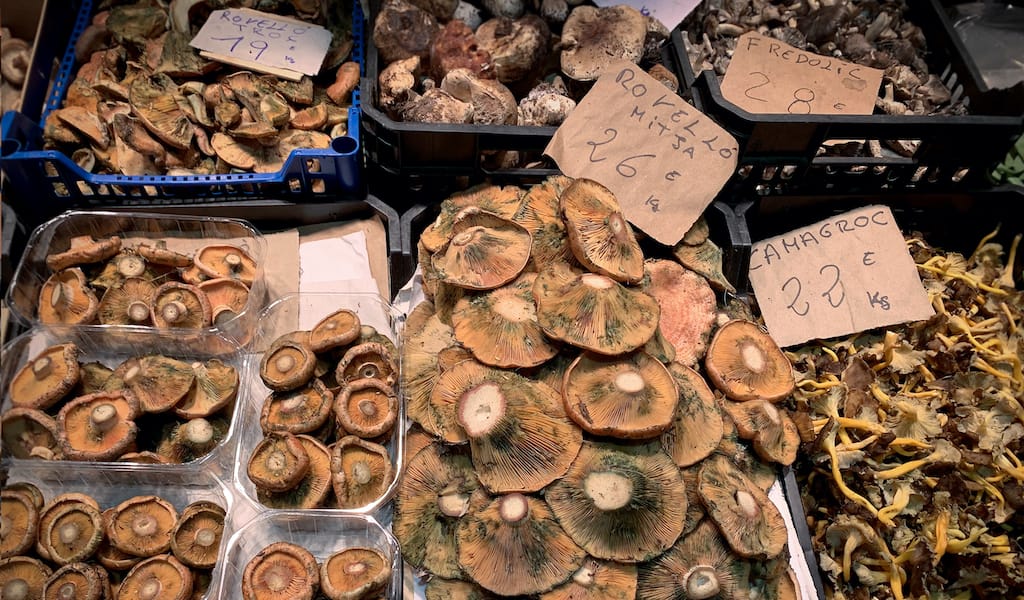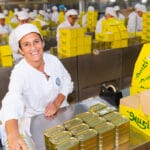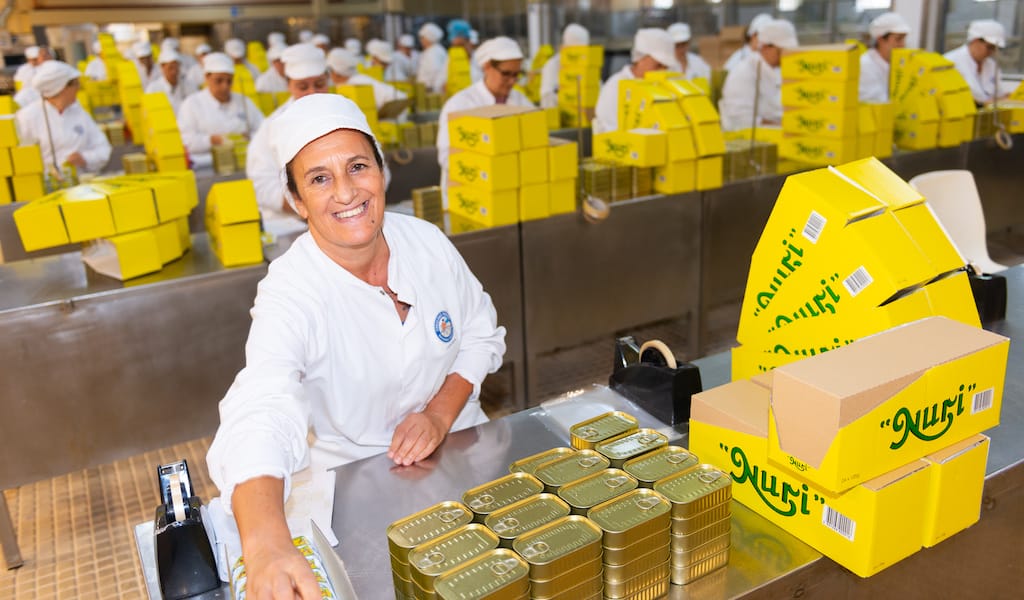Mushroom hunting has an irresistible, magical pull. Composer John Cage, an avid mushroom collector, found them an integral part of his creative process, once writing: “Much can be learned about music by devoting oneself to the mushroom.” Every fall, thousands of Catalans likewise find themselves under the mushroom’s spell, following the elusive fungus’s silent melody into the woods, a rustic wicker basket in one hand and – more and more these days – a GPS-enabled smartphone in the other.
This practice is an old tradition in Catalonia that begins in the forest and ends at the dinner table. Nowadays, the tradition has become a hugely popular pastime for aficionados, called boletaires in Catalan. Many of these bolataires are entire families with deep knowledge about locations, species and recipes, passing this heritage – basket included – from generation to generation. The other authorities in the matter are individuals – professional mycologists, of course, but also just experienced local experts who very often become providers to the specialized restaurants and best mushroom shops in the cities. But in the last few years, more and more curious novices are willing to spend the early part of the day hunched low over the wet ground, scanning every nook in one of Catalonia’s 18 national in search of edible mushrooms. There was even a hit television program that ran for ten years called Caçadors de bolets (“Mushroom Hunters”), devoted to the activity, with a touch of comedy that helped cultivate the passion for the “sport” among the Catalan masses.
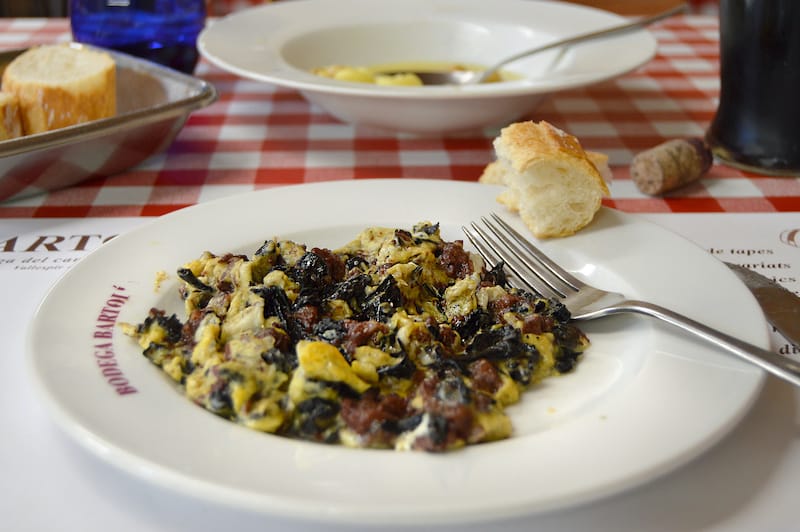
Mushroom gathering has become so widespread, in fact, that the Catalonian government has been forced to limit the access, through licenses and tariffs, to some of the most visited forests in order to protect the mushrooms’ natural habitat. One of the major reasons the forests now need that extra protection is because the mushroom’s modern hunters now have an arsenal of digital tools at their disposal to help them in their search for fungal gold. In the last few years, Catalan developers have created several apps that let everybody in on previously secret picking spots and even direct people to formerly little-known mountain village restaurants that specialize in mushroom dishes. Other, more utilitarian apps provide detailed descriptions and images of both edible and poisonous mushrooms.
On the other hand, for many regions close to the Pyrenees, where the amount of mushrooms is exceptionally high, the passion for edible fungi has resulted in a variety of special events celebrated mostly during October and November, like the dozens of Firas del Bolet (mushroom festivals and fairs) as well as village mushroom markets in places like Berguedà, Ripollés, Osona, Gironés, Bages or Maresme. Each season, hundreds of urbanites flock to these stands, and to explore the “mushroom routes” such as the Cuina del Bolet, which lists 13 restaurants with special mushroom menus in Berguedá area.
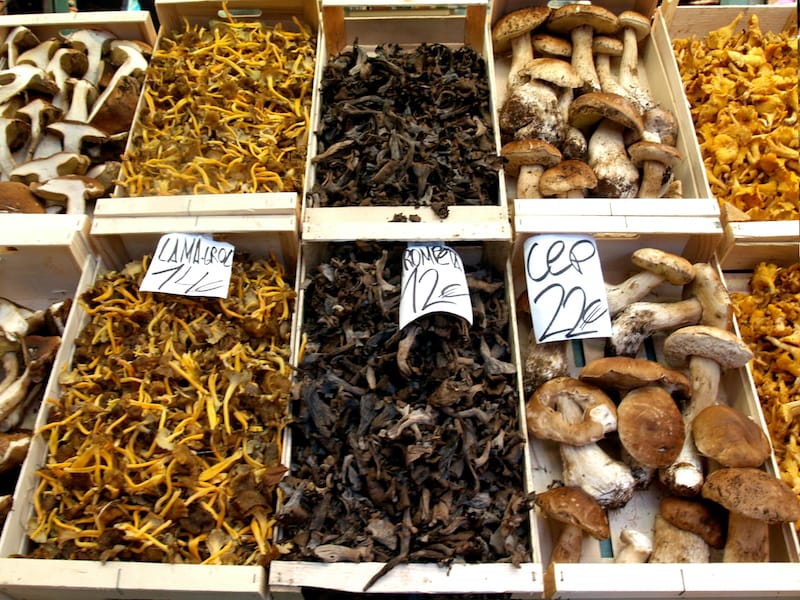
For those who can’t make it to the forest, Barcelona’s lovely markets are the next best place to go foraging for fall’s mushroom bounty. During the season, most of the market’s fruit and vegetable stalls carry mushrooms. But, as we all know, if you want the best mushrooms, you must go into deepest, darkest corner of the forest. The same is true in La Boquería market, where, tucked into the far end of its central corridor, Bolets Petràs, Barcelona’s finest mushroom shop, can be found. Opened by Llorenç Petràs and now managed by his son Xavi Petrás, both influential mushroom experts who have helped introduce local eaters to a wider range of mushroom varieties, Bolets Petràs has supplied mushrooms for some of Catalonia’s best chefs and restaurants (including El Bulli, in its time).
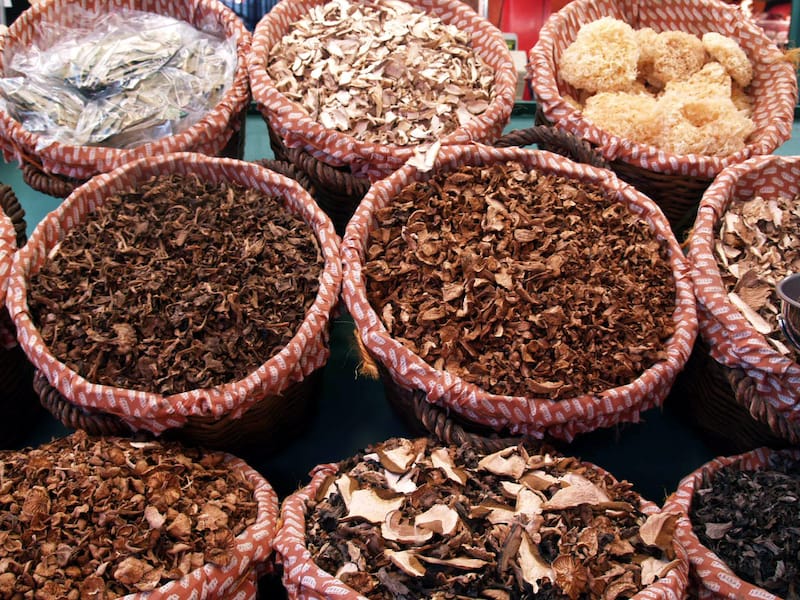
Along with mushrooms, Petràs also sells truffles, wild flowers, wild herbs and, up until two years ago, when it became prohibited, even edible insects. For those in search of a traditional Catalan variety of mushroom, Xavi and Isaac will likely direct you to the delicious rovellones, ceps, llanegas negras (hygrophorus) or rossinyols (golden chanterelles). And, for those who ask, they will usually offer up a traditional Catalan mushroom recipe as well. Mushrooms may be in fashion in the contemporary culinary world, but their magic aura is timeless.
To eat mushrooms in Barcelona, there are lots of possibilities; many traditional and modern eateries always incorporate mushrooms in their seasonal specials. Here are a few of our favorite places in which to partake in this delightful tradition:

The family-run restaurant Bodega Bartolí, opened in 1939 in Sants neighborhood, boasts a considerable of dishes with mushrooms in their menu. The two brothers Albert and Vicent, the current generation in charge, are great boletaires who like to personally hunt some of the mushrooms served at their tables: Ceps (boletus edulis), trompetes de la mort (black trumpets) or camagrocs (yellow foot chanterelles) are some of the mushrooms served here with scramble eggs and sausages, asparagus or prawns. The seasonal rovellons (saffron caped mushrooms) also show up in the daily fall specials, much to the enjoyment of Bartolí’s regulars.
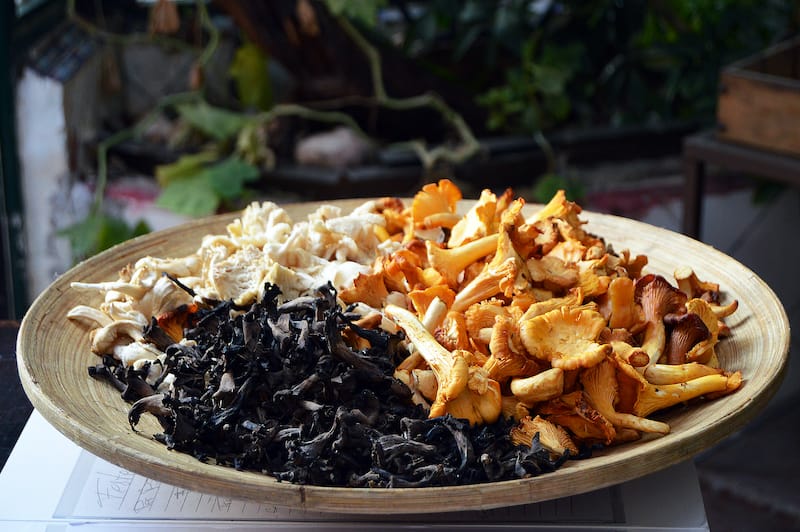
Taverna La Parra is another one of the old-school eateries, in this case in Hostafrancs quarter, where mushrooms are an indispensable element of the seasonal menu. Here, you can enjoy them on the quiet terrace or in the rustic dining room of this old former inn transformed into an urban tavern. Boletus with garlic and black pepper are one of their star dishes; golden chantarells, black trumpets and wild rovellons also make an appearance in fall, served in a casserole or grilled simply as a side dish or a starter.

To elevate your mushroom experience, you can visit the gastronomic classic La Taverna del Clinic (Carrer Rosselló 155, L’Example), opened in 2006. Besides other seasonal dishes, brothers Toni and Manu Simôes offer an amazing tasting menu fully dedicated to the magic of mushrooms, composed of seven delicious dishes that offer a complete tour of the Catalan mushroom catalog, all of them from the provider Puig Bolets in the Osona region. Among the dishes are the surf-and-turf boletus with scallop sashimi, the delicious morels with foie-grass cream and truffle, or the succulent and aromatic golden chanterelles with Catalan pork sausage (butifarra del perol) and Iberian pig broth, to mention a few.

But Catalonia is not the only region in Spain with mushroom fever – edible fungi are also greatly appreciated in the Basque country. In Barcelona’s Fort Pienc area, you will find the perfect merger of the Basque and Catalan passion for mushrooms in El Chato, the first Basque restaurant in town, opened in 1941 and family run. Here you will find mushroom dishes prepared to perfection, such as the iconic rovellons with salt, pepper and parsley, or the always-mouthwatering combination butifarra amb bolets, Catalan sausage with seasonal mushrooms of the day.
Petrás original owner Llorenç is quoted as saying: “I love mushrooms, because they are a mystery.” If you like to eat mysteriously, the season to do so in Catalonia is now.
Published on November 03, 2022
Related stories
February 7, 2024
PortoAt first glance, there’s not much to see in Mealhada, a town in Portugal’s central inland Bairrada region about an hour’s drive south of Porto. If there is a main feature here, it’s probably the EN1, the country’s original north-south highway, which slices the town in half, providing a conduit for a seemingly never-ending parade…
January 19, 2024
LisbonIt’s an early example of guilt tripping. The story goes that a monk arrived in a Portuguese village, hungry and clever. He grabbed a rock and carried it door to door, claiming that it was his only ingredient, asking people if they would be kind enough to supplement it so he could make a meal.…
December 7, 2023
PortoMatosinhos, it could be said, has seen better times. In its heyday, the semi-industrial-feeling port city just north of Porto was once home to 54 fish canneries. Today, only two remain. Along the city’s wide, empty-feeling streets, some of the city’s former factories and their graceful Art Nouveau facades have been reappropriated as other businesses…







































